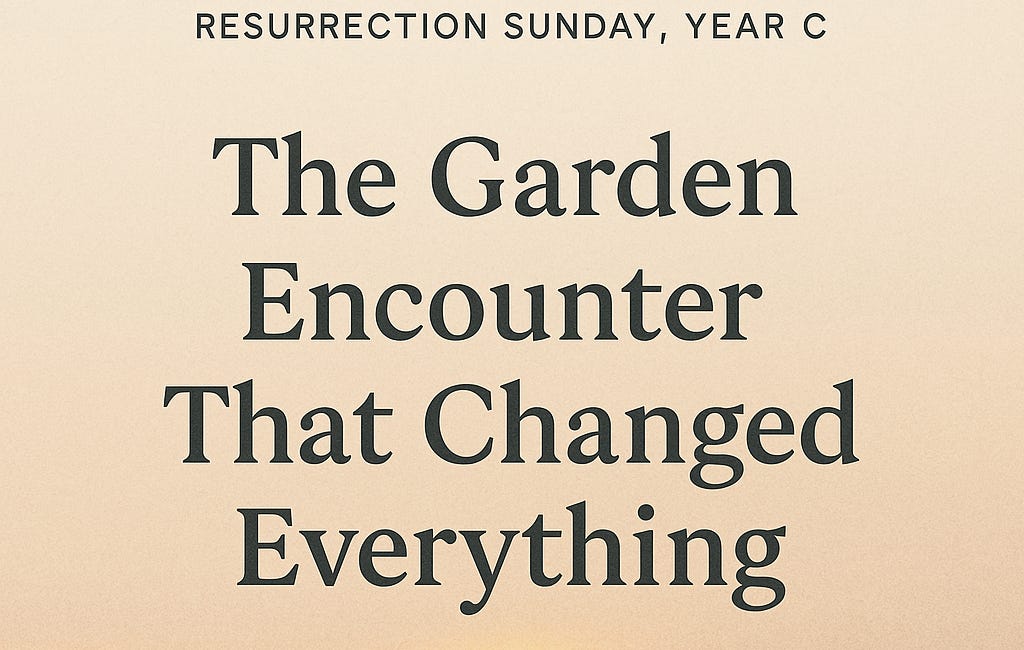Study Notes: John 20:1–18
What I’m Noticing in the Text
Each week, I spend time with the lectionary readings—listening, studying, and wondering what the Spirit might be saying. These notes are not polished reflections or sermons. They’re glimpses into what’s stirring beneath the surface—a gathering of context, insight, and gentle invitation for those walking the way of Jesus with open hearts and honest questions.
This week, we enter the quiet, disrupted garden of John 20:1–18, where grief meets presence, and resurrection whispers through a name.
Context
This passage captures the early morning of resurrection—before understanding, before joy, before light has fully broken in. It begins with Mary Magdalene walking to the tomb in grief and ends with her running from it in witness.
The Gospel of John is deeply symbolic, and this scene reflects that: the garden setting, the mistaken identity, the folded linens—all serve to connect resurrection with both new creation and intimate, personal revelation. Jesus’ crucifixion, just days before, had brought trauma and confusion. Now, resurrection unfolds not with grandeur, but quietly—through presence and recognition.
Themes
Love and Relationship - Mary is the first to see the risen Jesus, and her recognition comes not through sight, but through hearing her name. Relationship is at the heart of resurrection.
Inclusion - Mary Magdalene, a woman whose voice would have held little authority in her time, is the first apostle of the resurrection. She is commissioned to tell the others—offering a bold affirmation of God’s trust in the marginalized.
Healing and New Creation - This is a Genesis moment. The garden setting, Jesus mistaken for the gardener, and the dawn of a new day all speak to the birth of something new: resurrection as restoration, not escape.
Faith and Humility - Mary does not recognize Jesus at first. The disciples do not fully understand. This story invites us to see faith as a process—often slow, often unfolding in grief, and always grounded in trust rather than certainty.
Wrestling
Mary’s voice is central in this text—yet throughout history, her role has often been downplayed. Why are we slow to recognize the first witness of resurrection as a model of authority?
There’s also tension in the disciples’ absence. Had they believed Mary’s message, perhaps Jesus would not have needed to reappear later behind locked doors. What are the consequences of not trusting marginalized voices?
And then there is the emptiness itself—the folded cloths, the quietness, the ambiguity. Resurrection here is not dramatic. It’s subtle. Tender. For those of us longing for clarity, this text might feel unsatisfying. For those of us craving presence, it may be everything.
Big Idea
Resurrection begins with a name. Not in spectacle, but in intimacy. Not in certainty, but in a voice that speaks to us personally—calling us beloved, known, and sent.
Question
Where in your life is Jesus speaking your name—and are you willing to stop and listen?






